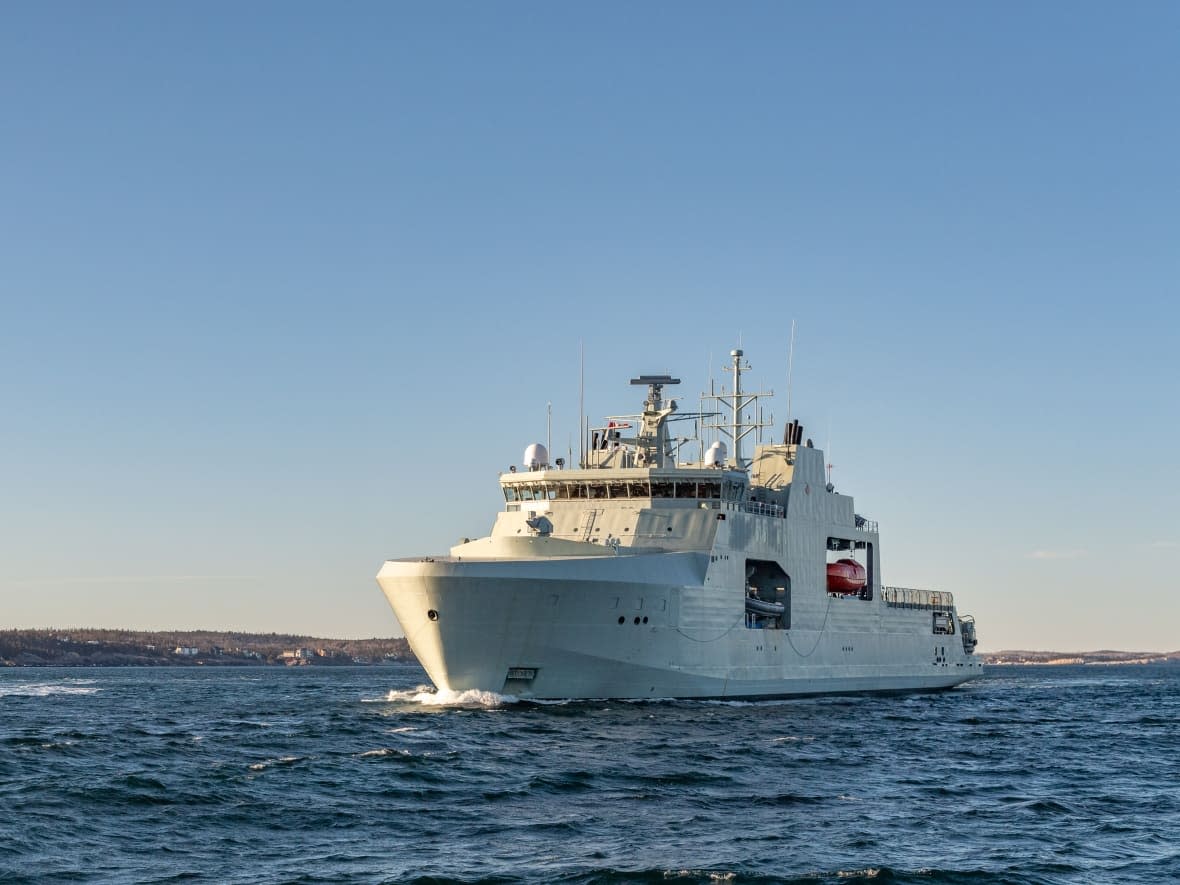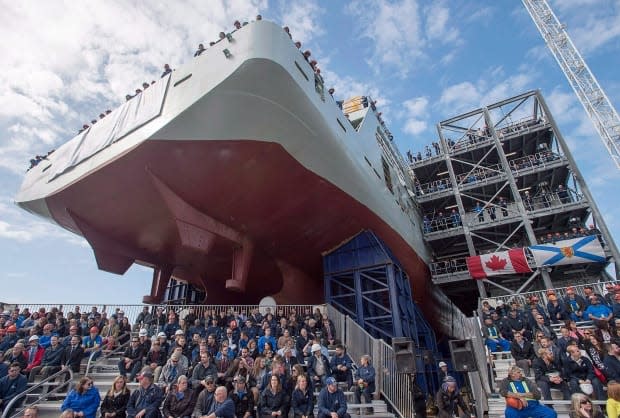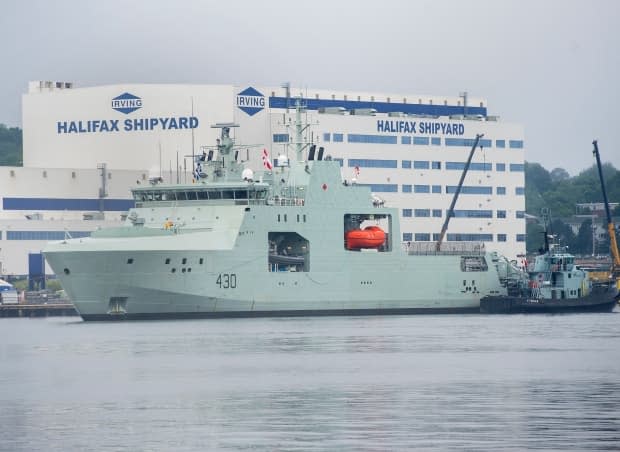Price tag for navy, coast guard patrol ships soars to $6.5 billion

It will cost Canadian taxpayers upwards of $6.5 billion to acquire six Arctic Offshore Patrol Ships for the navy and two additional similar vessels for the coast guard, according to newly tabled documents and a statement from the federal government.
Public Services and Procurement Canada (PSPC) says a contract amendment has been signed with Irving Shipbuilding Inc. of Halifax, N.S. that allows for a top-up to the budget for the military ships and sets the contract price for the coast guard vessels.
The cost of the navy ships has now risen to $4.98 billion from an earlier projection of $4.3 billion. The contract for the coast guard vessels has been set at $1.6 billion — an increase of $100 million from the figures tabled before Parliament last spring.

The news of the contract amendment was released quietly by PSPC this week in a media statement. It came days after the department tabled an biannual report on the progress of major projects with the House of Commons government operations and estimates committee (OGGO), which has been studying shipbuilding programs, among other things.
The report was delivered on Dec. 30, 2022, between Christmas and New Year's — leaving MPs with absolutely no opportunity to question federal officials about the reasons for the higher price tags.
Mary Keith, vice-president of communications for J.D. Irving, told CBC News in Nova Scotia that the contract for the coast guard ships is good news for shipbuilders because they now have the green light to start cutting steel.
Both procurement services and the Department of National Defence blame the increases on the labour shortages and supply chain issues brought on by the pandemic — factors that PSPC said have, among other things, resulted in "higher shipping costs and higher costs for spare parts."
In a media statement, PSPC said it has undertaken a thorough review of the program's projected costs and has built a contingency fund into the planning process to cover "possible cost impacts due to higher than forecasted cost of materials."
But critics say the Liberal government has not provided much oversight of the shipbuilding program writ large and that costs continue to swell each year.
Ottawa pins blame on the pandemic
Early last year, MPs heard from Simon Page, assistant deputy minister of defence and marine procurement at PSPC. Page gave them the most substantive testimony they'd heard from a government official about the status of the program. He blamed spiraling costs in part on the fallout from the pandemic.
"Unfortunately, just when the performance indicators were looking good, the pandemic hit and it hit hard. I'm not saying that the pandemic is responsible for all the issues, but it did not help the shipbuilding industry whatsoever," Page told the government operations committee under opposition questioning.
"We now have to deal with the additional costs shipyards are charging and the new schedules. We are working closely with third parties to review everything and make sure that, as you said, the costs are justified."
What the government hasn't explained in great detail — and to the satisfaction of Parliamentarians — is why the coast guard variant of the arctic patrol ship, which does not contain weapons and defensive systems, will cost more to build than the navy ships.

Andy Smith, the deputy commissioner of the Canadian Coast Guard in charge of shipbuilding, defended the cost difference while testifying before Parliament on March 25, 2022.
"Indeed, the ships may look the same, but they will be fundamentally different," Smith said, noting that while the coast guard vessels lack armaments, their bridge wings have been expanded.
"There are some accommodation changes. The ships may look the same, but inside they will be different."
He said the comparison between the coast guard and military ships is unfair.
"They will cost more, but in fairness, look at the price of steel in the last two years. It has skyrocketed, and for the supply chain and the long-lead items that were generated for the first six ships, a lot of the procurements were done four or five years ago," Smith said.
"So it's not untoward to think that the costs of ships seven and eight would be higher than those for the first six."
Critic calls out lack of transparency
Dave Perry, one of the country's leading defence procurement experts, said he's troubled by the government's lack of transparency regarding the arctic patrol ship program and the larger, more expensive and vastly more complex plan to replace the country's frigates.
For several years after the current Liberal government was elected, he said, parliamentarians had much more detailed information at their fingertips about how the programs were unfolding and the factors driving them.
"Back in 2017, and for a couple of years afterwards, there was a significant effort on the part of National Defence, following government direction, to provide a much higher level of regular repeated information that was accessible on the internet about its defence procurement projects," said Perry, vice-president of the Canadian Global Affairs Institute, an Ottawa-based think-tank that occasionally holds events sponsored by defence contractors.
"There was a lot of detail provided in the public version of the investment plan, about the fiscal picture, National Defence, or how they're going to spend money. And then that all basically evaporated."
Perry said that while he understands the constraints that came with the pandemic, "it makes zero sense" that it has been so hard to get basic information about the shipbuilding programs from the public service.
Three of the military versions of the arctic ships have been delivered to the navy. The other three are in various stages of construction.
According to the Ottawa Citizen, the first of the navy's patrol ships — HMCS Harry DeWolfe — is out of service until April because of ongoing mechanical problems. There have also been concerns about some fittings and valves in the ship's potable water system. An investigation revealed they were manufactured from alloys that exceeded the allowable amount of lead, the Citizen reported last year.
Work on the coast guard variant of the Arctic ships is expected to begin this summer, with delivery expected around 2026.


